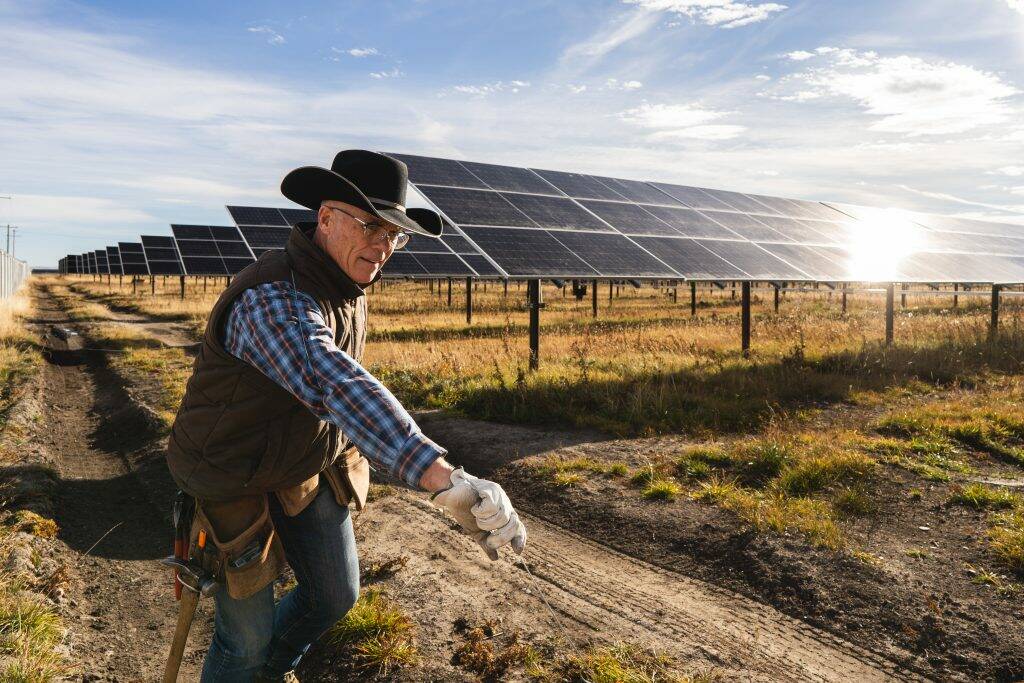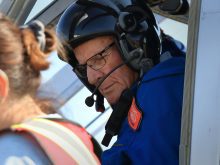DEMMITT, Alta. – It was billed as the Last Supper for the tiny rural Alberta community, but instead of death, Demmitt has had a resurrection.
There is little left of the once thriving community that used to attract hundreds of square dancers from across the province. A super mailbox, a few houses, a ball diamond, an abandoned railway line and an old community hall remain in the hamlet.
There also remains a will to survive and a desire to build a strong community.
In October 2007, the Ray Lake Dancers Cultural Society, the square dancing group that administered the hall, received a notice from corporate registries that the society would be dissolved. About half of the 75 area residents came to a potluck supper to discuss the future of the hall and their community.
Read Also

Support needed at all levels for high-value solar projects
Farmers, rural municipalities and governments should welcome any opportunity to get involved in large-scale solar power installations, say agrivoltaics proponents.
“At the end of the meeting we had gone from a defunct society to 11 directors. It was with enthusiasm and not because they felt pressured,” said Peter von Tiesenhausen, president of the renamed Demmitt Cultural Society.
The centrepiece of the revived community will be a new $1 million self-sustaining, energy efficient community centre made from local material, including wood from mountain pine beetle infected trees.
“We think the architecture is a key element to making it viable, ” said von Tiesenhausen.
“If it was a standard steel building, no way people would get on side.”
The existing hall resembles the many Quonset type halls scattered across the prairies.
Inside, the floor has separated from the walls when the building shifted from its foundation.
The wooden dance floor that once gave a lift to dozens of lively dancers now groans and shifts with each step. Handmade square dance banners pinned to the ceiling provide reminders of how alive the old hall once was.
Von Tiesenhausen said the group wants to build a place of beauty that local people are proud to show off and offer as a model for other small rural communities.
“We’re asking for a fairly substantial community centre in the most unlikely location,” he said of Demmitt, situated halfway between Grande Prairie and Dawson Creek.
To raise money for the project and build a sense of community, the Borderline Cultural Series was created. It has attracted international talent like Stephen Fearing, James Keelaghan and the Sienna Dahlen Quartet.
Since its revival, the hall has also held dances, benefit fundraisers, Christmas concerts, a Halloween party and a wedding.
Such developments have von Tiesenhausen’s sons talking about staying in the community.
Von Tiesenhausen is sure people will make the 45-minute drive from nearby cities to be entertained.
“The other option is we don’t have a community.”
The community has already raised about $135,000 in cash and $300,000 in in-kind donations from earth works, labour, surveying, carpentry, logs, crane work and donated wood.
The society will work with Fairview College this summer to build the facility’s entrance, a timber-framed bridge. Other community members have volunteered to take a course to work on the hall’s stone wall.
The group is also exploring micro generation and alternative power to help reduce costs.
“We’d like to be one of the first communities working towards true sustainability. The building and facility could last for 100 years or more.”














